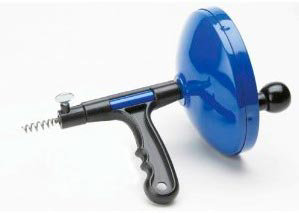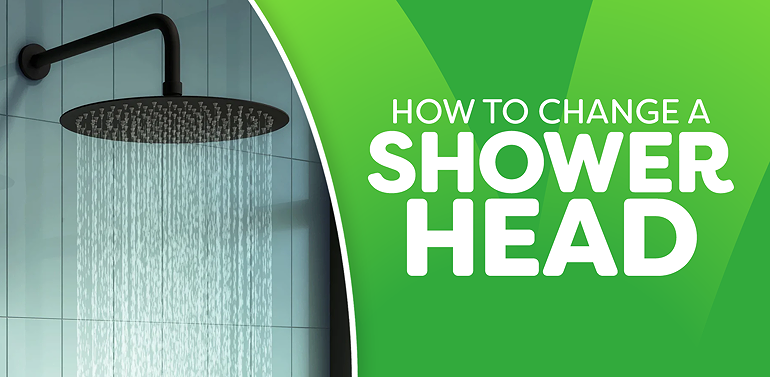UP TO 60% OFF SPRING SALE!
Free Delivery on Orders Over £499**
fixing a slow draining bathroom basin
Fixing a Slow Draining Bathroom Basin
If you've noticed your bathroom sink is taking longer to drain than usual then you may have a clog. Luckily fixing this shouldn't be too much hassle, as we explain. Follow the steps below to free that drain!

Step 1. Assessment
Step 2. Stick the kettle on!
Step 3. Find a plunger
Step 4. Using an auger
Step 5. Beyond the trap
Jump to a section of this post by clicking a link above.
If your bathroom basin is beginning to take an awfully long time to drain after you’ve had the tap on for a little while, then chances are there’ll be a clog somewhere. But don’t panic! Most clogs are relatively straight forward fixes, and there are some pretty neat tricks you can use to free up your pipes again. In this guide we’ll take a look at potential problem areas, and the best ways to solve them.
Step 1. Assessment
The first thing you should do is assess just how bad the clog might be. Close your waste and turn the tap on, allowing it to fill up about a quarter of the basin with water. Then release the waste and see how long it takes for the water to drain. If it takes a little bit longer than usual the clog may not be too bad; but if it takes a long time for the water to drain then it may be something more serious…
Before we proceed any further with this guide it's worth mentioning that there’s one thing which you should never do to try and mend a blocked basin, and that’s pour bleach or a caustic drain cleaner down the waste. It doesn’t matter how stubborn the clog may seem, or how tempted you are to use a powerful cleaner, don’t, as it’s not only pretty much ineffective but it’s also dangerous as the toxic nature of some of these chemicals is not something you want anywhere near your skin, especially if you end up with a sink full of bleach because it has failed to dissolve the clog!
Step 2. Stick the kettle on!
If you have metal pipes, the first plan of attack should be to fill and boil the kettle (and try to avoid the temptation to make yourself a sly brew in the process) before pouring it directly into the waste. It’s important that you don’t splash the boiling hot water directly onto the ceramic here as it might cause some damage. We wouldn’t recommend using this method if you have PVC pipes either as boiling water might soften the pipe, causing them to loosen which obviously isn’t great!
Give the hot water a few minutes in the pipes before turning your tap on. If there are still signs of a clog, it’s time to proceed to step three.
Step 3. Find a plunger
If you have PVC pipes then you should begin at this stage. For metal pipes, if the boiling water hasn’t shifted the clog then a good old fashioned plunger may be just what’s needed here. What you need is something called a ‘cup plunger’, an easy enough item to find at any hardware store if you don’t already have one. Before using the plunger, you should place a piece of duct tape over the overflow hole as this will help you to create an effective vacuum.
Next, fill the basin about halfway with water and place the plunger over the plug hole. Use quick plunges and after a while you should hear a gurgling sound if the blockage is beginning to clear. Keep this up for a short while before removing the duct tape and then try filling the basin with water and draining again. If it drains properly then job done; if not then it’s time for some slightly more drastic action!
Step 4. Using an auger
For more serious blockages, you’ll need to invest in something called a sink auger (or a snake as they are often called). What this clever tool does is extend a cable down into the waste pipe which will allow you to locate the clog. When you find the blockage, pull the cable out around a further 12 inches before tightening the set screw.

Turn the crank handle and extend more cable until the clog feels as though it has been removed. Pull the cable out and use the hot water tap to flush out the drain. This method will usually work if the clog is located in the trap part of the basin.
Tip: A handy alternative here, is to get an old wire clothes hanger and straighten it out, bending it into a little hook at one end. While this is usually nowhere near as effective as a sink auger, it might just work wonders on smaller clogs so it’s worth a shot if you have one of these hanging around (sorry!)
Step 5. Beyond the trap
If none of the above methods have removed the clog, then it’s time to get serious as the blockage will be beyond the trap. What you need to do here is first unscrew the trap and remove it (ensuring a bucket is placed underneath) before extending the auger into the exposed drain pipe. Use exactly the same process as before to work through the blockage. Once you feel as though it’s been removed, simply bolt everything back up and let some water into the basin. You should now be good to go!
If for some reason this has still not shifted the blockage then there may be a more significant problem and you should contact a professional to take a look at it for you.
Did you find our step-by-step guide to fixing a slow draining bathroom basin helpful? If you would like more 'how to' DIY bathroom guides then be sure to check out our bathroom DIY and technical advice page. Good luck and thanks for reading.



